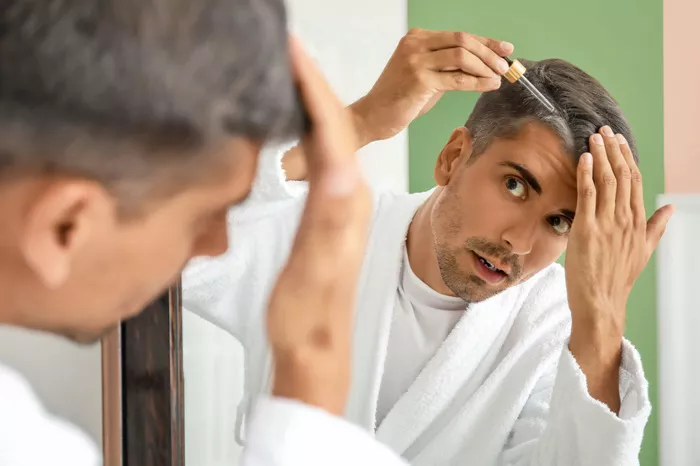Hair loss is a common concern affecting millions of people worldwide. Whether caused by genetics, aging, stress, or medical conditions, thinning hair can impact self-esteem and confidence. Fortunately, advancements in science and dermatology have led to a variety of hair regrowth treatments designed to slow down hair loss, stimulate follicles, and restore thickness.
This article provides a detailed, easy-to-understand introduction to hair regrowth treatments, including how they work, their pros and cons, and tips for choosing the right option.
What Is Hair Regrowth Treatment?
Hair regrowth treatment refers to any method, product, or procedure that aims to reverse hair thinning or loss by reactivating dormant hair follicles or protecting existing hair from damage. These treatments target the root causes of hair loss, such as hormonal imbalances, nutrient deficiencies, or inflammation, to promote healthier, stronger hair growth.
Why Does Hair Loss Happen?
Before diving into treatments, it’s important to understand why hair loss occurs.
Common causes include:
Genetics (Androgenetic Alopecia): The most common cause, often called male/female pattern baldness.
Hormonal Changes: Pregnancy, menopause, or thyroid issues can trigger temporary or permanent hair loss.
Medical Conditions: Scalp infections, alopecia areata (autoimmune disorder), or chronic illnesses.
Lifestyle Factors: Poor diet, stress, harsh hairstyling, or vitamin deficiencies.
Medications: Chemotherapy, antidepressants, or blood thinners.
Identifying the underlying cause is critical for selecting the right treatment.
Types of Hair Regrowth Treatments
Hair regrowth solutions fall into five main categories:
Topical Treatments
These are applied directly to the scalp.
Minoxidil (Rogaine):
- How It Works: Increases blood flow to follicles, prolonging the hair growth phase.
- Usage: Applied twice daily; results visible in 4–6 months.
- Pros: Over-the-counter (OTC), safe for most users.
- Cons: Requires lifelong use; may cause scalp irritation.
Prescription Topicals:
- Corticosteroid Lotions: Reduce inflammation in conditions like alopecia areata.
Oral Medications
Taken as pills or supplements.
Finasteride (Propecia):
- How It Works: Blocks DHT, a hormone linked to genetic hair loss.
- Usage: Daily pill; effective for men only.
- Pros: Slows hair loss in 90% of users.
- Cons: Potential side effects (e.g., decreased libido).
Supplements:
- Biotin, Iron, or Zinc: Address nutrient deficiencies that weaken hair.
Medical Procedures
Performed in clinics by professionals.
Platelet-Rich Plasma (PRP) Therapy:
- How It Works: Injections of concentrated platelets from your blood stimulate follicles.
- Usage: 3–6 sessions spaced monthly.
- Pros: Natural, minimal downtime.
- Cons: Costly; results vary.
Hair Transplant Surgery:
- How It Works: Follicles from dense areas (e.g., back of head) are transplanted to thinning zones.
- Types: FUT (strip surgery) vs. FUE (individual follicle extraction).
- Pros: Permanent results.
- Cons: Expensive; requires recovery time.
Low-Level Laser Therapy (LLLT)
- How It Works: Lasers or LED devices boost cell activity in follicles.
- Devices: Laser caps, combs, or in-office treatments.
- Pros: Non-invasive, painless.
- Cons: Slow results (6–12 months); daily use required.
Natural/Home Remedies
- Essential Oils: Rosemary or peppermint oil may improve circulation.
- Scalp Massage: Increases blood flow to follicles.
- Dietary Changes: Protein-rich foods, vitamins A, C, D, and E.
Choosing the Right Treatment
Consider these factors:
- Cause of Hair Loss: Genetic? Hormonal? Stress-related?
- Budget: OTC products are affordable; transplants cost thousands.
- Lifestyle: Time for daily routines vs. one-time procedures.
- Side Effects: Consult a doctor about risks (e.g., finasteride’s hormonal impact).
- Tip: Start with less invasive options (minoxidil, supplements) before exploring procedures.
Myths vs. Facts About Hair Regrowth
Myth: “Shaving makes hair grow back thicker.”
Fact: Hair may look coarser initially but doesn’t alter growth rate or thickness.
Myth: “Only men need hair loss treatments.”
Fact: 40% of hair loss sufferers are women.
Myth: “Expensive products always work better.”
Fact: Effectiveness depends on ingredients, not price.
Lifestyle Tips to Support Hair Health
- Eat a Balanced Diet: Focus on protein, iron, and omega-3s.
- Manage Stress: Yoga, meditation, or therapy can reduce cortisol levels.
- Avoid Heat/Tight Hairstyles: Limit blow-drying, braids, or ponytails that pull hair.
- Gentle Hair Care: Use sulfate-free shampoos; avoid vigorous brushing.
When to See a Professional
Consult a dermatologist if:
- Hair loss is sudden or patchy.
- You experience itching, pain, or scalp redness.
- OTC treatments fail after 6 months.
Early intervention improves outcomes!
Patience Is Key
Hair regrowth is a slow process. Most treatments take 3–6 months to show visible results. Consistency and realistic expectations are crucial.
Conclusion
Hair regrowth treatments offer hope for anyone struggling with thinning hair. From topical solutions to advanced procedures, there’s an option for every need and budget. By understanding the causes of hair loss and working with a healthcare provider, you can create a personalized plan to restore your hair’s vitality.
Remember, healthy hair starts with a holistic approach—combine treatments with good nutrition, stress management, and gentle care for the best results.
Related topics:
What Is the Most Effective Hair Regrowth Treatment?
Carol’s Daughter Introduces New Minoxidil Treatment for Hair Regrowth
Excessive Hair Loss: Causes & Treatments


